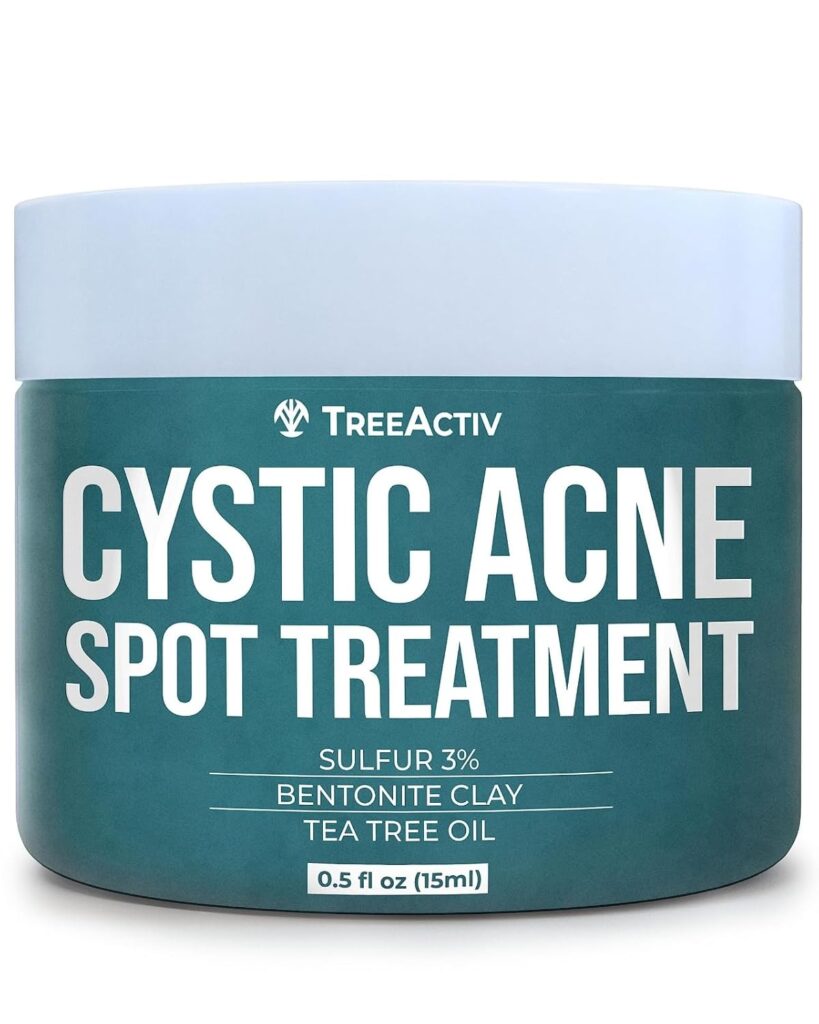Struggling with cyst breakouts can be frustrating and painful.
In this blog, we explore 5 effective ways to manage and ease cyst breakouts, helping you achieve clearer skin.
From targeted tips to lifestyle adjustments, these strategies aim to reduce inflammation and promote healing. Discover how to take control of your skin health and boost your confidence!
What Are Cystic Breakouts?
Cyst breakouts can be one of the most stubborn and frustrating skin concerns to deal with.
These deep, painful blemishes form when dead skin cells, sebum, and bacteria become trapped deep within the pores, leading to severe inflammation and swelling.
While cyst breakouts can be challenging to take care of, understanding the root causes and implementing the right strategies can go a long way in preventing and managing these problematic breakouts.
Common culprits behind cyst breakouts include:
- Hormonal imbalances, particularly fluctuations in testosterone and estrogen
- Genetics and family history of cystic breakouts
- Stress and high cortisol levels
- Certain medications like oral contraceptives or steroids
- Comedogenic (pore-clogging) ingredients in skincare and makeup products
5 Ways To Ease Cyst Breakouts
Regardless of the underlying cause, dealing with cyst breakouts can take a toll on one’s confidence and self-esteem.
Fortunately, there are several effective steps you can take to help soothe, treat, and prevent these stubborn blemishes.
1. Use A Cyst Breakout Spot Treatment Cream
Look for a targeted spot treatment containing potent, fast-acting ingredients like salicylic acid, and bentonite clay to help unclog pores, reduce inflammation, and dry out cyst breakouts.
Apply the treatment directly to affected areas at the first sign of a flare-up.
My personal favorite is TreeActiv’s Cystic Spot Treatment Cream.
Its powerful blend of Bentonite Clay, Sulfur, and Tea Tree Oil effectively pulls out and dries out any breakouts, often showing noticeable results in just 20 minutes.
With over 120 uses per container, it’s perfect for both face and body, and its soothing Aloe makes it gentle on sensitive skin.
Plus, being vegan and cruelty-free adds to its appeal, making it a staple in my skincare routine.
Simply follow the directions and you’re good to go!
2. Avoid Picking and Popping
It can be tempting to try and pop or pick at cystic blemishes, but this can actually make the situation worse by driving dirt and bacteria deeper into the pore and increasing inflammation.
Instead, be patient and let the spot treatment work its magic.
3. Incorporate a Clay Mask
Clay masks containing ingredients like kaolin or bentonite clay can help absorb excess oil, unclog pores, and draw impurities out of the skin.
Use a clay mask 1-2 times per week, focusing on the T-zone and areas prone to breakouts.
4. Optimize Your Skincare Routine
Be sure to use non-comedogenic, gentle cleansers, moisturizers, and serums that won’t clog your pores or exacerbate breakouts.
Avoid harsh scrubbing and over-washing, as this can strip the skin and trigger more oil production.
5. Manage Stress and Hormones
Since hormonal imbalances and high stress levels can contribute to cystic breakouts, incorporate stress-management techniques like meditation, yoga, or deep breathing exercises into your routine.
You may also want to consult a dermatologist about prescription treatments to help regulate your hormones.
Manage Your Cyst Breakouts
By implementing these five proven strategies, you can take control of your cystic breakouts and achieve clearer, healthier-looking skin.
Remember, patience and consistency are key when it comes to treating this stubborn skin concern.
Thank you for reading!
Affiliate Disclosure
Some of the links on this site are affiliate links. This means that if you click on the link and purchase the item, we may receive an affiliate commission at no extra cost to you. I only recommend products or services that I believe will add value to my readers, however some (not all) do pay us to be on this blog. Your support and theirs helps keep this blog running, and I genuinely appreciate it.
Medical Disclaimer
The information provided on this website is for educational purposes only and is not intended as medical advice. This blog or the writer is not a licensed healthcare professional, and the content should not be used as a substitute for professional medical diagnosis, treatment, or advice. Always consult with your physician or other qualified healthcare provider before starting any new treatment or making any changes to your healthcare routine.
